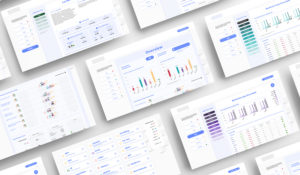It’s a common scenario: An organization has a big decision to make and leadership is looking for data to help inform their path. Analysts run the data and create a dashboard to illustrate key points, then leadership makes a decision based on what they think they understand from the data. Is it that simple?
Sometimes, it might be the requested data point may be easily captured with minimal digging. But more often, smart organizations will recognize that data more often represent multiple layers of information and realities and that detective work is necessary before making key decisions. Read on for Senior Data Analyst Julia Smadja’s insights on how to access the full picture through the smart use of data.
When Data Can’t Tell the Full Story
Organizations that aren’t accustomed to using data to inform their decisions often fall into the trap of crafting a narrative first and then seeking data to support their preconceived viewpoint. This approach becomes particularly challenging when the data does not support the expected outcomes.. In these instances, leaders may instinctively doubt the accuracy of the data, leading them to question the credibility of the analysts or the integrity of the visual representations of the data. Doubting the data or the analyst often seems easier than accepting the data’s accuracy and acknowledging that the initial narrative may be flawed.
Once the data is validated, often the next challenge is changing mindsets and adjusting expectations for the “new” data-backed story. There are sure to also be differences between how the business intelligence or data analyst views what the data is saying versus how the organizational leader interprets it.
As a result, The Clearing recommends that data analysts be prepared to dive deeper into data explanations and remain confident when addressing inquiries. When faced with a question that requires further investigation, it’s advisable to respond with, “That’s a great question; let me get back to you.”
In line with this, it’s essential for leadership to engage with data thoughtfully and allow sufficient time for a comprehensive analysis. This approach encourages a deeper exploration of the details and avoids premature conclusions. For example, if data indicates a decrease in revenue and employee work hours, a more detailed examination might reveal that the number of work hours hasn’t changed, but a decrease in firm-fixed-price contract revenue is the actual cause of the revenue dip. Such insights can significantly alter the course of decision-making, highlighting the importance of a comprehensive understanding of all factors involved.
In short, we cannot look at one piece of data and expect to draw accurate conclusions, or take one piece of data and decide to ignore the rest. As the Blind Men and the Elephant PRIME reminds us, a man touching only an elephant’s leg may think it’s a tree; a man touching only an elephant’s trunk might think it’s a snake. They realize it’s an elephant only when they share information and the bigger picture. Similarly, the leadership team needs to strategically dive deep and make informed decisions based on facts pulled from the entire story.

Fostering a Data-Driven Culture
Encouraging teams to actively use data-driven insights to guide their decision-making starts with leadership that doesn’t choose the story they’d like to tell and then find the data to support it. And, when leadership sees a point that contradicts what they thought, they should take a step back and find out more before making any decisions.
When a data point surprises you, don’t simply accept it or dismiss it; use that surprise as a cue to investigate further. For example, if, you encounter an unexpected profit margin, dive deeper, analyze the relationship between revenue and costs, and determine what contributes to these costs. If you cannot find a clear answer, consult colleagues who can offer insights into profit and loss details and trends before making decisions based on data you don’t fully understand.
Remember, always make informed decisions based on a thorough understanding of all relevant data.
Additionally, data analysts must be integral members of the team and participate in relevant discussions. This involvement helps them understand the purpose behind data requests, enabling more comprehensive analyses. Encourage them to provide additional data and information beyond the initial request to support more informed decision-making.
In summary, use your resources, ensure your teams understand what you’re asking for, and don’t make decisions based on insufficient data. Be a detective – because sometimes the best decision isn’t reached until you’ve dissected every layer of information.
If you are interested in how your organization can better leverage its data in decision-making, we can help. Reach out when you are ready.
